4D Printing
4D PRINTING AND UNIVERSAL
TRANSFORMATION
Skylar Tibbits, Massachusetts Institute of Technology Carrie McKnelly, Massachusetts Institute of Technology
Carlos Olguin, Autodesk, Inc.
Daniel Dikovsky and Shai Hirsch, Stratasys Ltd.

3D printing has captured the imagination of everyone from industry experts to at-home hobbyists. However, there are significant challenges that need to be addressed in order for 3D printing to have widespread adoption in construction and manufacturing.
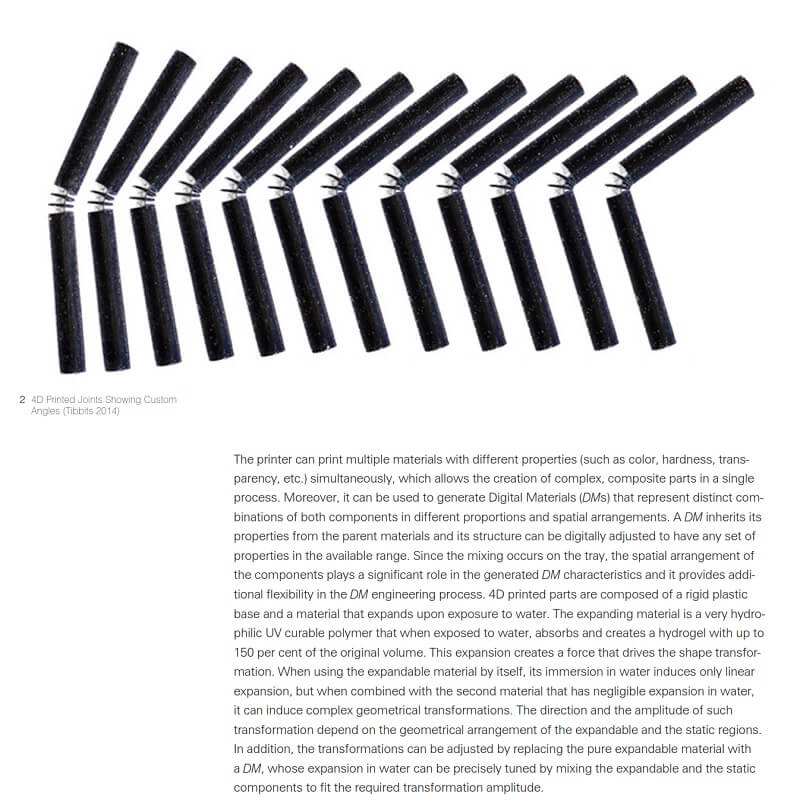 A new category of printing has recently been introduced, called 4D printing, which describes the ability for a material system or object to change form and/or function after printing. 4D printing offers a number of unique advantages over 3D printing that may prove to be the critical capability needed to catalyze widespread implementation.
A new category of printing has recently been introduced, called 4D printing, which describes the ability for a material system or object to change form and/or function after printing. 4D printing offers a number of unique advantages over 3D printing that may prove to be the critical capability needed to catalyze widespread implementation.
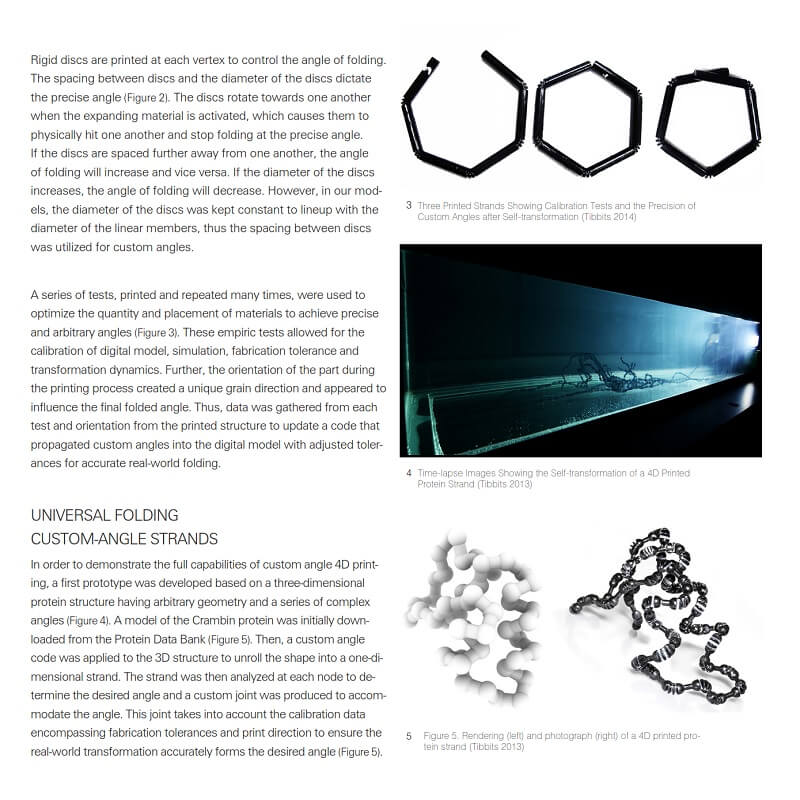 This paper by Skylar Tibbits, Carrie McKnelly, Carlos Olguin, Daniel Dikovsky and Shai Hirsch, attempts to go beyond existing capabilities in 4D printing to create precise and universal folding techniques that approach a wider range of applications through a series of radically new physical models.
This paper by Skylar Tibbits, Carrie McKnelly, Carlos Olguin, Daniel Dikovsky and Shai Hirsch, attempts to go beyond existing capabilities in 4D printing to create precise and universal folding techniques that approach a wider range of applications through a series of radically new physical models.
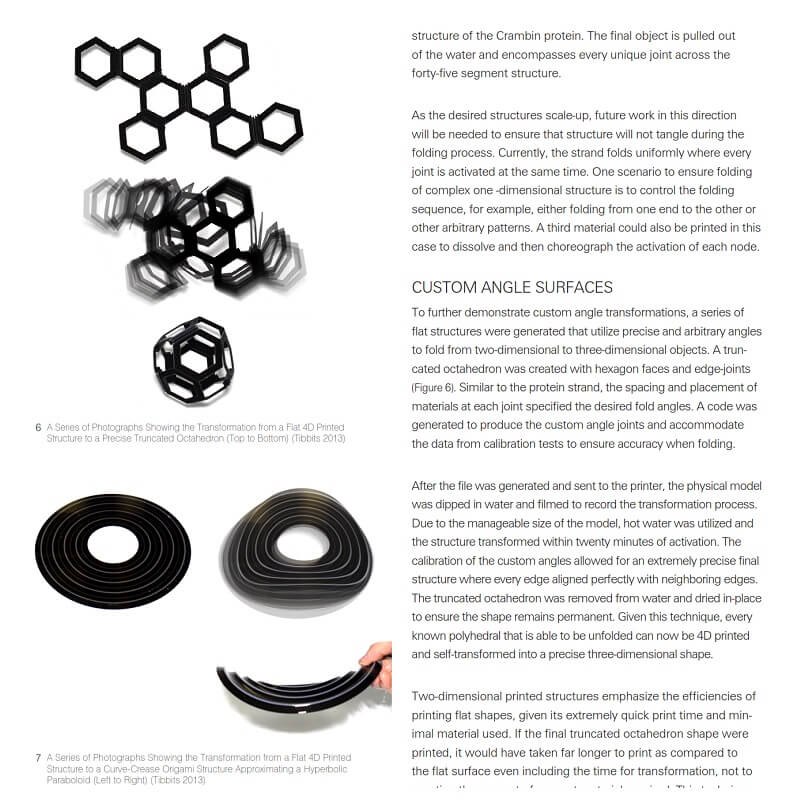 A number of physical and digital prototypes demonstrate major advances in 4D printing, including: custom angle-structures that can transform from any one shape into another rigid 3D structure, curved-crease origami for doubly curved surfaces and dynamic fields utilizing surface curling and gradient material distribution.
A number of physical and digital prototypes demonstrate major advances in 4D printing, including: custom angle-structures that can transform from any one shape into another rigid 3D structure, curved-crease origami for doubly curved surfaces and dynamic fields utilizing surface curling and gradient material distribution.
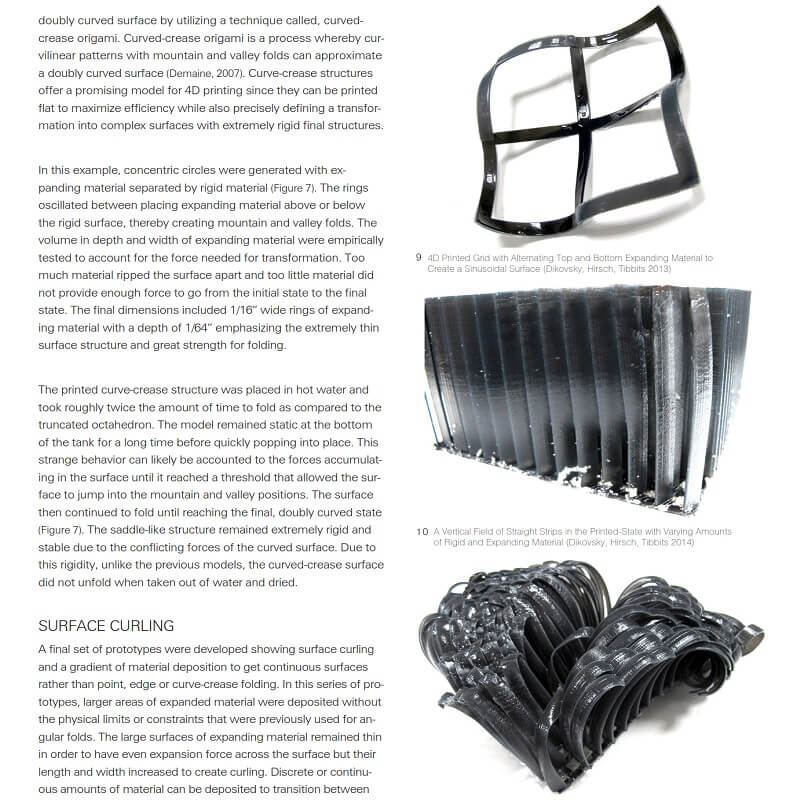
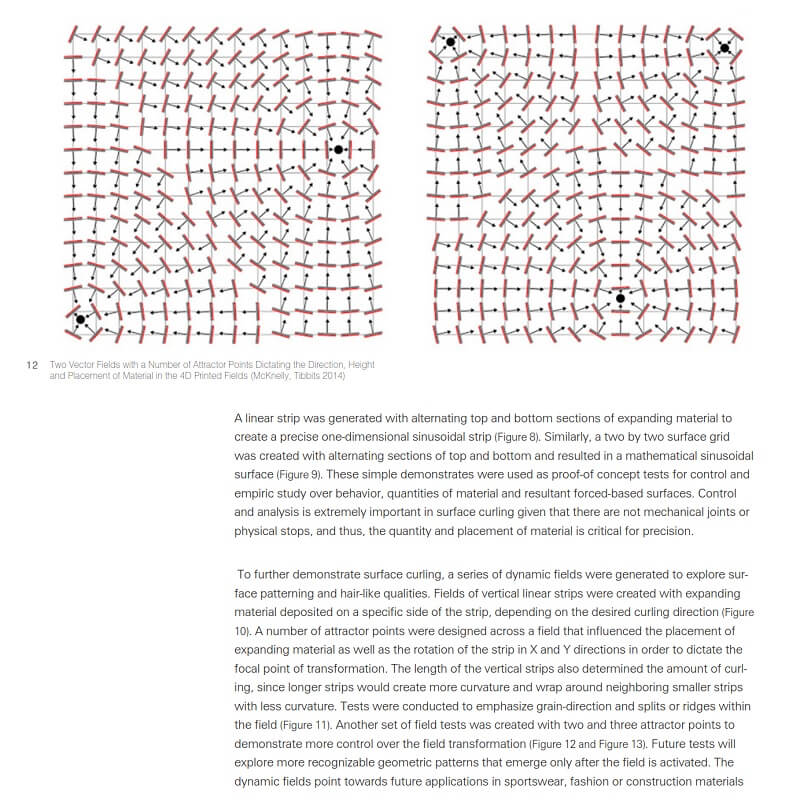
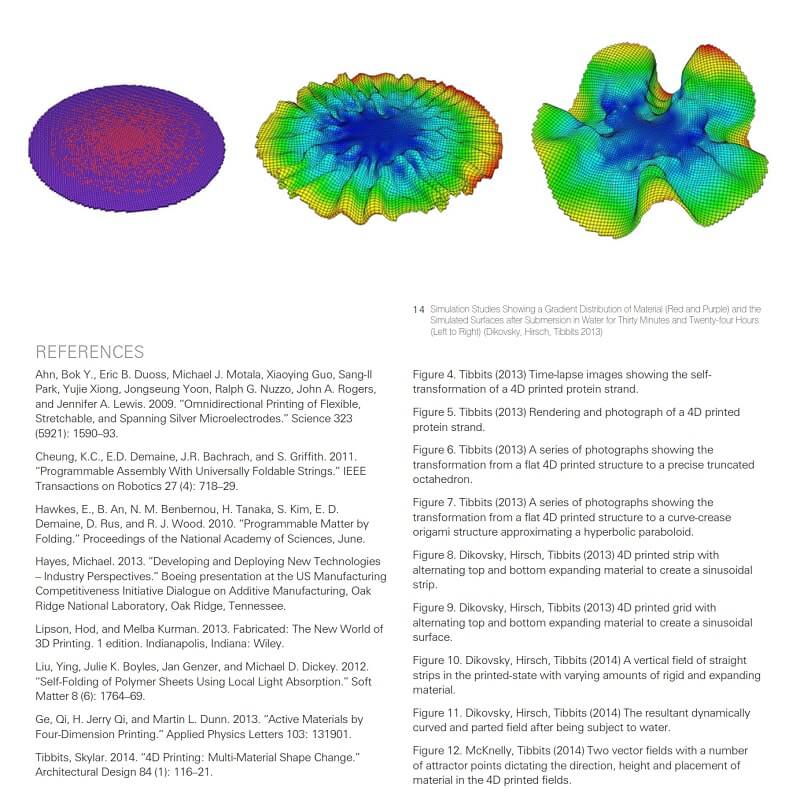


























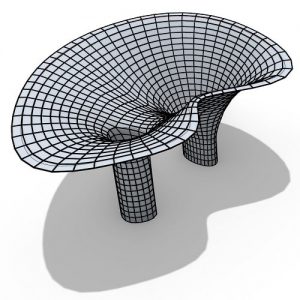
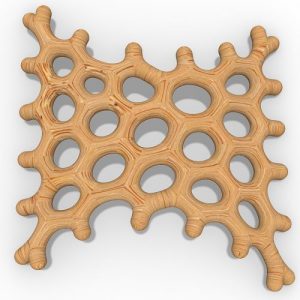
Comments